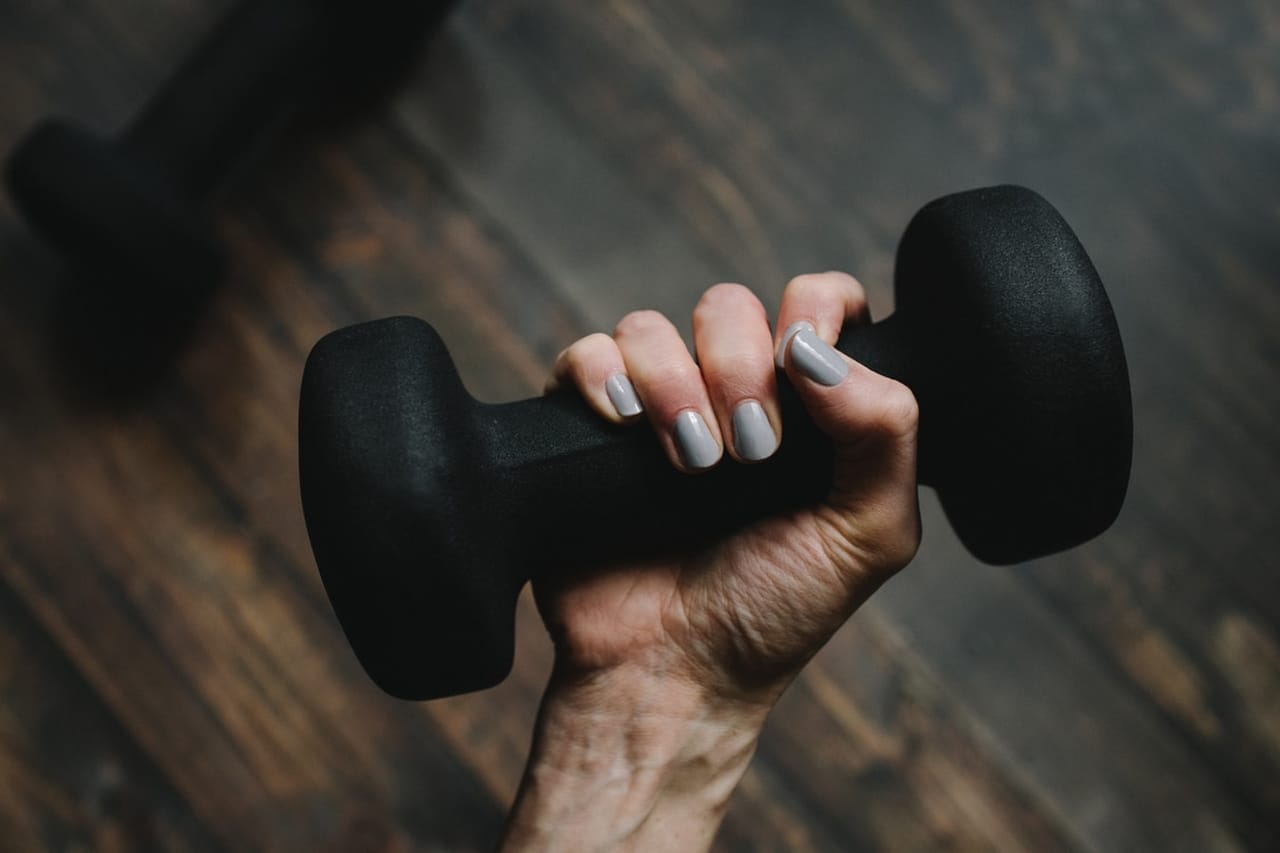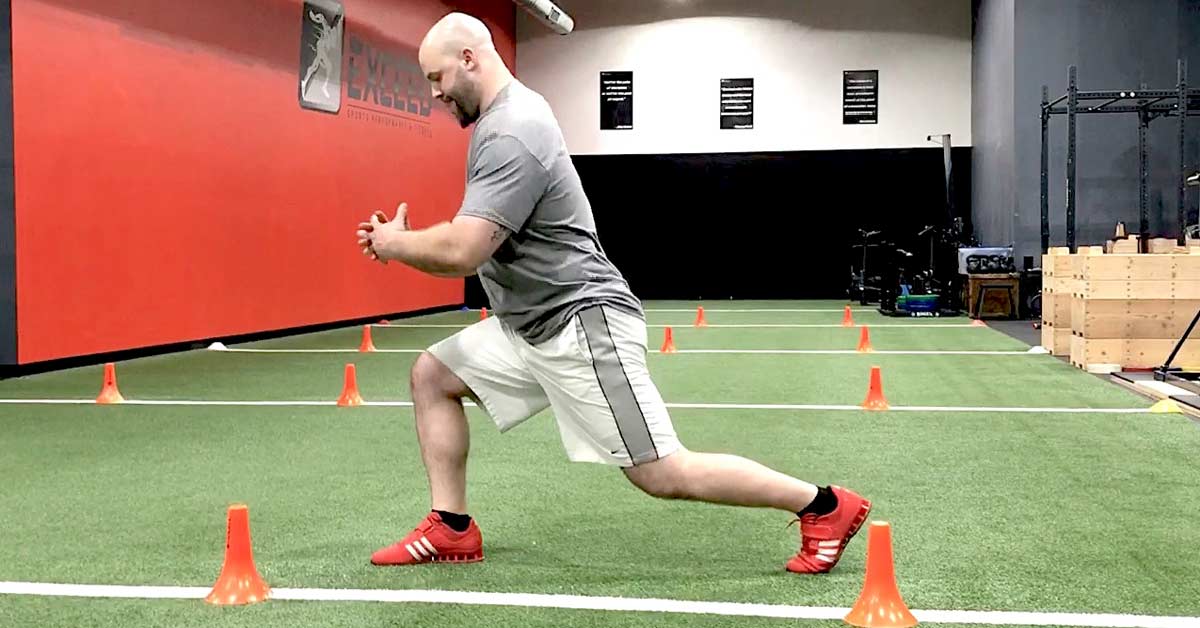Most Bodyweight Training Exercises are Considered Which Type of Movements that compound movements that engage multiple muscle groups simultaneously, promoting strength and functional fitness. These exercises often involve complex, dynamic movements that mimic real-life activities, making them effective for improving overall physical performance.
Incorporating bodyweight exercises into your workout routine can help enhance your strength, endurance, and mobility. Whether you’re a beginner or an experienced athlete, bodyweight training offers a versatile and accessible way to build a strong, resilient body without the need for expensive equipment.
We will delve deeper into the benefits of bodyweight training and explore some of the most popular exercises that you can incorporate into your fitness regimen for optimal results.
Can you do bodyweight exercises every day?

Most Bodyweight Training Exercises are Considered Which Type of Movements
Dynamic Movements
Most Bodyweight Training Exercises are Considered Which Type of Movements
Definition: Dynamic movements in bodyweight training refer to exercises that involve continuous and fluid movements using one’s body weight.
Benefits: Dynamic movements help improve coordination, agility, and muscle strength while enhancing overall flexibility.
Examples: Here are some common dynamic bodyweight exercises:
- Jump Squats
- Mountain Climbers
- Burpees
- Jumping Lunges
Most Bodyweight Training Exercises are Considered Which Type of Movements
Isometric Movements
Isometric Movements:
Definition
In bodyweight training, isometric movements involve muscle contractions without joint movement.
Benefits
- Builds strength rapidly
- Enhances muscle endurance
- Improves joint stability
Examples
- Plank
- Wall Sit
- Static Squat
Comparison
Comparison:
Most Bodyweight Training Exercises are Considered Which Type of Movements? When it comes to bodyweight training, it is important to understand the type of movements involved in various exercises. Most Bodyweight Training Exercises are Considered Which Type of Movements? It can be categorized into two types of movements: compound movements and isolation movements.
Key Differences:
Compound movements are exercises that involve multiple muscle groups and joints working together to perform the movement. Most Bodyweight Training Exercises are Considered Which Type of Movements, These exercises are often dynamic and require coordination and stability. On the other hand, isolation movements target specific muscle groups and focus on strengthening or toning those muscles.
Most Bodyweight Training Exercises are Considered Which Type of Movements
Here is a comparison between compound and isolation movements:
| Category | Compound Movements | Isolation Movements |
|---|---|---|
| Definition | Exercises involving multiple muscle groups and joints. | Exercises targeting specific muscle groups. |
| Muscle Groups | Work multiple muscle groups simultaneously. | Focus on one specific muscle group. |
| Functional Strength | Develops overall functional strength. | Improves strength in specific muscles. |
| Calorie Burn | Burns more calories due to increased muscle engagement. | May burn fewer calories due to targeting smaller muscle groups. |
| Time Efficiency | Efficient for full-body workouts. | Allows isolation and focus on specific areas. |
Suitability For Different Fitness Goals:
The choice between compound and isolation movements depends on your individual fitness goals and preferences.
- Building functional strength and improving overall fitness: Compound movements are ideal as they engage multiple muscle groups, improving coordination, stability, and overall functional strength.
- Targeting specific muscle groups or correcting muscle imbalances: Isolation movements allow you to focus on specific muscle groups, making them suitable for targeting weak areas or correcting imbalances.
- Time-efficient workouts: Compound movements are great for those aiming for a full-body workout in a shorter period, as they engage multiple muscles simultaneously.
- Variety and versatility: A combination of compound and isolation movements can provide diversity to your training routine, ensuring that you address different muscle groups and maintain overall balance in your fitness program.
By understanding the key differences between compound and isolation movements and their suitability for different fitness goals, you can create a well-rounded bodyweight training routine that meets your specific needs.

Most Bodyweight Training Exercises are Considered Which Type of Movements
Training Programs
Most Bodyweight Training Exercises are Considered Which Type of Movements? When it comes to bodyweight training exercises, it’s essential to consider the type of movements involved. Understanding the different types of movements can help in designing effective training programs that cater to various fitness goals and requirements.
Incorporating Dynamic Movements
Dynamic movements involve continuous and controlled motions that engage multiple muscles and joints. They are essential for building strength, power, and cardiovascular endurance. When incorporating dynamic movements into a bodyweight training program, exercises such as squats, lunges, push-ups, and burpees can be utilized to target different muscle groups and enhance overall athleticism.
Incorporating Isometric Movements
Isometric movements involve static contractions where the muscle length remains the same, but tension is generated. Incorporating isometric movements in bodyweight training programs can help in improving muscle endurance, stability, and overall body control. Plank holds wall sits, and static lunges are examples of isometric exercises that can be included to complement dynamic movements and provide a well-rounded training experience.
Combining Dynamic And Isometric Movements
Combining dynamic and isometric movements in training programs can offer a comprehensive approach to strength and conditioning. By integrating both types of movements, individuals can maximize muscle recruitment, improve joint stability, and enhance overall functional fitness. This balance allows for a more well-rounded and effective bodyweight training experience, leading to improved performance and reduced risk of injury.
Progression And Challenge
When it comes to bodyweight training exercises, they are considered to be a form of functional movements that involve using the body’s weight as resistance. Most Bodyweight Training Exercises are Considered Which Type of Movements, These movements not only help in building strength and endurance but also provide an effective way to progress and challenge oneself. Understanding the principles of progression and challenge in bodyweight training is crucial to achieving optimal results and avoiding plateaus in your fitness journey.
Progressive Overload With Dynamic Movements
The concept of progressive overload with dynamic movements involves gradually increasing the intensity or difficulty of your exercises over time. By incorporating dynamic movements such as explosive push-ups, jumping squats, or plyometric lunges, you can continually challenge your muscles to adapt and grow stronger.
Progressive Overload With Isometric Movements
Isometric movements, which involve holding a position without joint movement, can also be used to achieve progressive overload. By increasing the duration or adding variations to isometric exercises like planks, wall sits, or static holds, you can effectively challenge your muscle endurance and strength.
Challenging Yourself With Dynamic Movements
Dynamic movements present a great opportunity to challenge yourself by mastering advanced variations or increasing the speed and explosiveness of your movements. Incorporating deeper squat jumps, explosive pull-ups or one-arm push-ups can push your limits and drive continuous improvement.
Challenging Yourself With Isometric Movements
Isometric movements offer a unique way to challenge yourself by increasing the stability requirements or incorporating unilateral holds. By performing single-leg squats, one-arm planks, or one-legged bridges, you can intensify the demand on specific muscle groups and enhance overall stability and control.

Most Bodyweight Training Exercises are Considered Which Type of Movements
Considerations
Most Bodyweight Training Exercises are Considered Which Type of Movements? Bodyweight training exercises primarily focus on compound movements, involving multiple muscle groups simultaneously. These exercises improve strength, flexibility, and coordination.
Bodyweight training exercises are highly effective for building strength, flexibility, and overall fitness. These exercises involve using your body weight as resistance to challenge and train your muscles. Most Bodyweight Training Exercises are Considered Which Type of Movements Understanding the different types of movements involved in bodyweight training exercises is essential to ensure the proper execution and safety of your workout. There are two main types of movements in bodyweight training: dynamic movements and isometric movements. It is important to take certain precautions and adapt the exercises to individual fitness levels to maximize the benefits and minimize the risks. Do New Car Batteries Need To Be Charged
Precautions For Dynamic Movements
Dynamic movements in bodyweight training exercises involve continuous and controlled movements that engage multiple muscle groups simultaneously. Most Bodyweight Training Exercises are Considered Which Type of Movements? These movements include exercises like burpees, push-ups, squats, and lunges. While dynamic movements offer great cardiovascular benefits and help improve muscle strength and endurance, there are a few precautions to keep in mind:
- Ensure proper warm-up: Before engaging in dynamic movements, it is important to warm up your body adequately. A warm-up routine can include light cardio exercises such as jogging in place or jumping jacks to increase heart rate and loosen up the muscles.
- Maintain proper form: Incorrect form during dynamic movements can increase the risk of injury. It is crucial to maintain proper alignment and technique throughout the exercise. Keep your core engaged, your back straight, and your knees aligned with your toes.
- Start slowly and progress gradually: Most Bodyweight Training Exercises are Considered Which Type of Movements, If you are new to bodyweight training or have been inactive for a while, start with easier variations of dynamic exercises and gradually increase the intensity and complexity as your fitness level improves.
- Listen to your body: Pay attention to any discomfort or pain during dynamic movements. If you experience sharp pain or unusual discomfort, stop the exercise and consult a fitness professional or healthcare provider.
Most Bodyweight Training Exercises are Considered Which Type of Movements
Precautions For Isometric Movements
Isometric movements in bodyweight training exercises involve holding a static position without any joint movement. These movements include exercises like planks, wall sits, and static holds. Isometric exercises are excellent for improving core stability and developing muscular endurance, but precautions are necessary to prevent potential risks:
- Warm-up adequately: Just like with dynamic movements, it is important to warm up your body before performing isometric exercises. This helps increase blood flow to the muscles and prepares them for the static contractions.
- Maintain proper alignment: Proper form is crucial during isometric movements to avoid strain on the joints. Focus on maintaining a straight line from head to toe during exercises such as planks, and ensure your joints are in a stable position.
- Breathe properly: It is common for individuals to hold their breath during isometric exercises. Remember to breathe continuously and evenly throughout the exercise to prevent unnecessary strain on the cardiovascular system.
- Progress gradually: Most Bodyweight Training Exercises are Considered Which Type of Movements, Start with shorter durations and gradually increase the time as your muscular endurance improves. Avoid pushing yourself too hard too soon to prevent muscle strain or fatigue.
Adapting To Individual Fitness Levels
Every individual is unique, and their fitness levels vary. It is important to adapt bodyweight training exercises to suit your capabilities. Most Bodyweight Training Exercises are Considered Which Type of Movements? Here are a few considerations you should keep in mind:
- Start at your level: Begin with exercises that challenge you but are still manageable. It is better to start with easier variations and gradually progress to more difficult ones as you build strength and confidence.
- Modify the exercises: If you find certain exercises too challenging or uncomfortable, feel free to modify them to suit your needs. For example, if full push-ups are difficult, you can start with knee push-ups or perform the exercise against a wall.
- Listen to your body: Pay attention to how your body feels during and after the exercises. If you experience excessive fatigue, dizziness, or pain, adjust your intensity or consult a fitness professional.
- Monitor progress: Keep track of your progress by recording the number of repetitions, duration, or difficulty level. This allows you to monitor your improvements and set new goals for yourself.
Frequently Asked Questions On Most Bodyweight Training Exercises Are Considered Which Type Of Movements
What Are The Benefits Of Bodyweight Training Exercises?
Bodyweight training exercises offer numerous benefits, including improved strength, flexibility, and balance. They also require minimal equipment and can be done anywhere, making them accessible to all individuals seeking to improve their fitness levels.
Can Bodyweight Training Exercises Help With Weight Loss?
Yes, bodyweight training exercises can aid in weight loss by increasing metabolism and burning calories. As these exercises engage multiple muscle groups, they promote fat loss while preserving lean muscle mass, contributing to a more efficient weight management strategy.
How Can Beginners Start Bodyweight Training Exercises?
Most Bodyweight Training Exercises are Considered Which Type of Movements? Beginners can start bodyweight training exercises by incorporating simple movements such as squats, push-ups, and planks into their routines. Gradually increasing the intensity and complexity of these exercises over time will help build a strong foundation and prevent injury while progressing in their fitness journey.
Conclusion
Most Bodyweight Training Exercises are Considered Which Type of Movements? To sum up, bodyweight training exercises encompass a variety of movements that rely solely on your body weight for resistance. From push-ups and squats to planks and lunges, these exercises target multiple muscle groups and improve strength, flexibility, and endurance.
Incorporating bodyweight workouts into your fitness routine offers a convenient and effective way to stay fit and build a solid foundation of functional strength. Start exploring the versatility of bodyweight movements and unlock your full potential in fitness.

🌿 Welcome! I’m Romana Yasmin Ayasha, deeply invested in fitness, nourishing foods, and mental health. My journey into these realms has been driven by a belief in the power of self-care and self-discovery.🏋️♂️ For me, fitness nurtures both body and soul. Whether sweating in the gym or finding peace on my yoga mat, I believe in the impact of lifestyle choices on our well-being.🧠Breaking the stigma around mental health is my mission. From mindfulness to therapy, I champion practices that nourish our inner landscape.🔍 I’m always seeking knowledge to share through evidence-based insights, practical tips, and personal stories. Let’s explore holistic health together!
